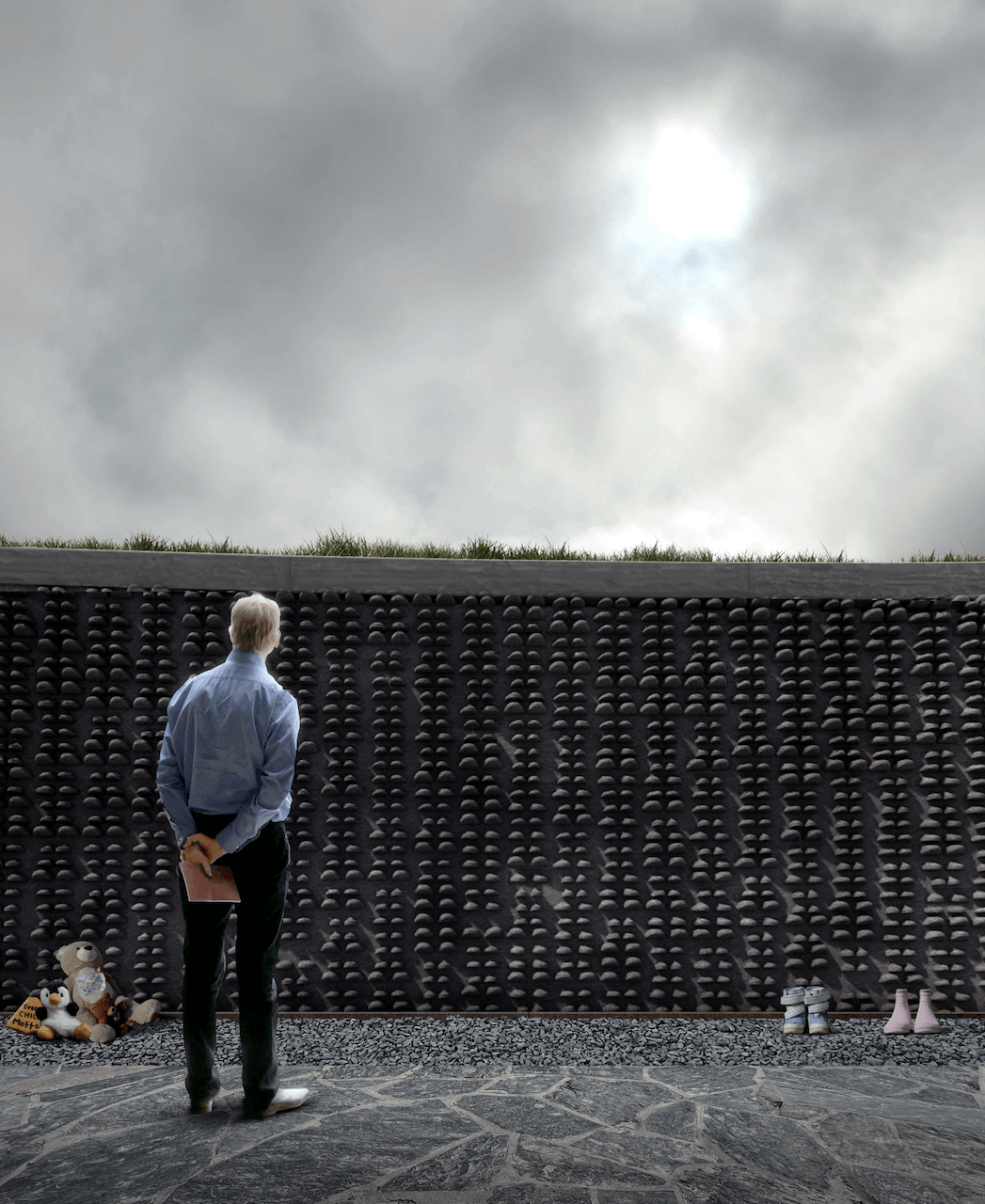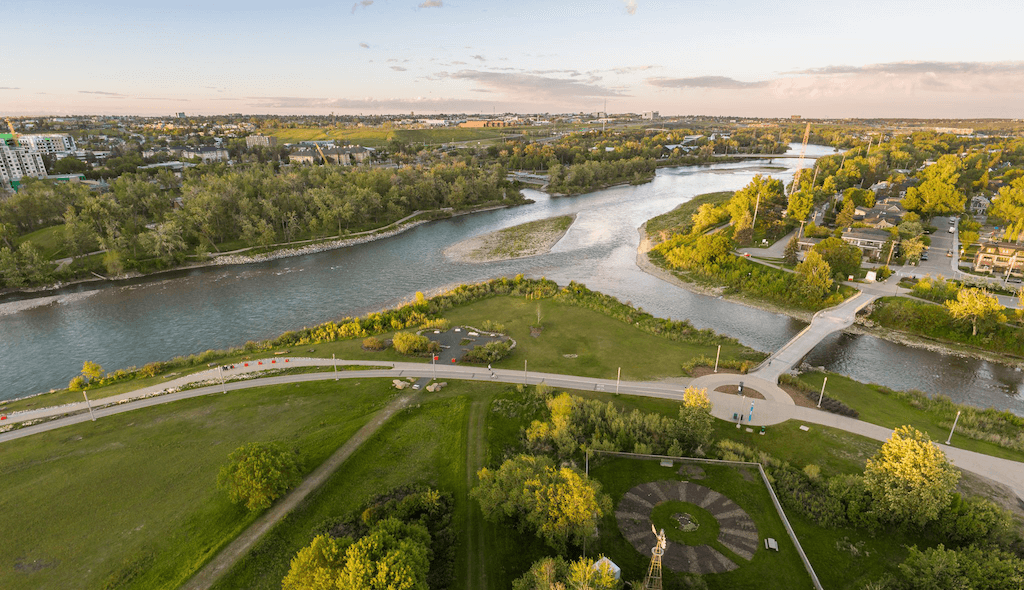After an extensive, Indigenous-led competition, the City of Calgary in Alberta, Canada, has chosen a design concept for the city’s future Indian Residential School Memorial. The vision from groundcubed, a local landscape architecture firm, and Siksika artist and residential school survivor Adrian Stimson has been selected as the design concept for the memorial. The new monument will replace the current, temporary memorial on the steps of Calgary’s city hall.
The city of Calgary initiated the memorial project in 2021 after the Tk’emlúps te Secwépemc Nation discovered the remains of 215 children near the former Kamloops Indian Residential School. A temporary memorial was erected around this time, made up of shoes, teddy bears, and other toys that represent the lost children.
Kamloops was one of 37 Residential Schools operated within Alberta, with approximately 130 schools existing across Canada from the 1880s until the 1990s. A National Historic Event, the residential school system had a lasting impact through its deliberate attempts to destroy Indigenous cultures, communities, and ways of life through oppressive and often traumatic means.
“This memorial represents a commitment to truth, acting as a place of remembrance, and a call to action,” shared Jyoti Gondek, mayor of the City of Calgary, in a press release. “It will stand as a permanent reminder of the children who never returned home, the survivors who carry deep scars, and the families and communities who continue to live with the intergenerational impacts of the residential school system.”

After a formal RFP went out in 2024, the design competition officially began. The process prioritized Indigenous voices throughout, requesting that the lead designer have verifiable Indian, Inuit, or Métis status and lived experiences of the Indian Residential School system. In May, an exhibition was hosted for public input on the four shortlisted design concepts. Alongside groundcubed and Stimson, the other finalists were: Niitsitapiisini – Our Way of Life, by Two Row Architect and co-designers Brian Porter and Matt Hickey; Nitsiníí’Pokaako’sa – My Special Child by Spectacle Bureau for Architecture and Jared Tailfeathers; and Footsteps in the Firelight by Tawaw Architecture Collective and Wanda Della Costa. The winning design was chosen by a jury composed of Indigenous members, including Elders, alongside technical experts.
The memorial will be positioned at The Confluence Historic Site & Parkland, formerly known as Fort Calgary. Built by the I. G. Baker Company of Fort Benton, Montana in 1875, the original fort was created to house the North-West Mounted Police (NWMP). The NWMP, sent by the Canadian government to establish relations with local Indigenous people and stop American expansion, remained at the site for 39 years. In 2024, the site was renamed in recognition that the NWMP’s occupation of the site did not represent the full story.

The selected concept, The Wandering Spirit, by groundcubed and Stimson considers the timeline and history of colonial contact in its design, situating the lost children within a deeper, more complex history. The core of the memorial sits in the center of interconnected spirals, toward a set point of convergence. Along one of the outer walls, the current,temporary memorial is honored with a cast of children’s shoes, carrying the symbolism into the space.
“I think, as we well know, if we forget we’re bound to repeat,” Stimson shared with CBC in a radio interview, “It’s a great opportunity for Calgarians in particular, and Albertans, and all Canadians, to come to the site and to experience and walk that path of reconciliation, healing and community building.”
Now that the design team has been selected, the project will move into a detailed design phase over the coming months to refine the concept before construction begins.
→ Continue reading at The Architect's Newspaper
